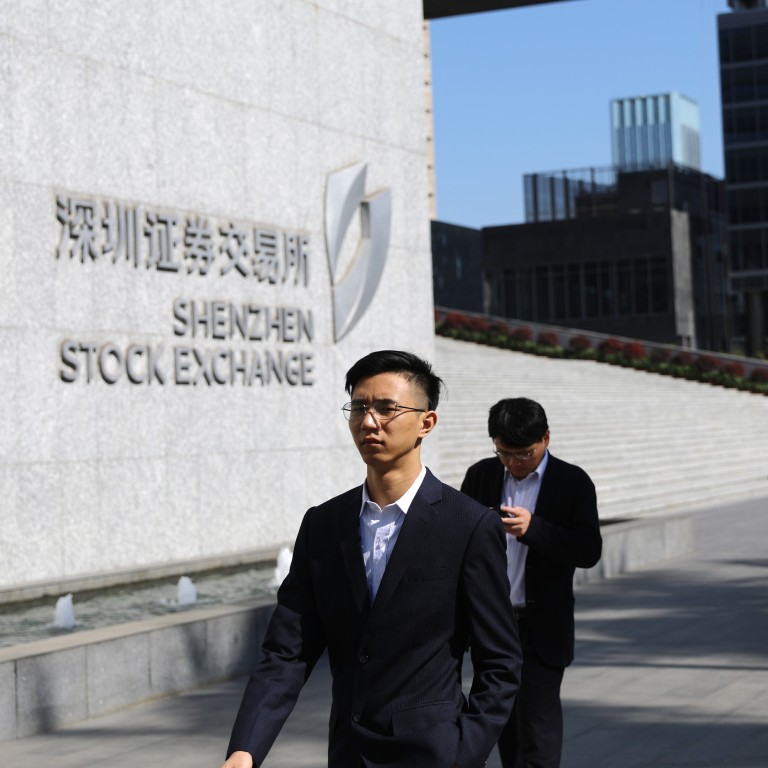
New rule allows MPF fund managers to invest in Shanghai, Shenzhen shares, enabling 4.5 million savers to tap mainland China’s booming stock market
- Before the rule change, only about 1.1 per cent of the Hong Kong pension fund’s HK$1 trillion of assets was invested in Chinese companies’ domestically-listed stock
- The Shanghai Composite Index has gained 9 per cent this year and the Shenzhen Component Index has surged by a third, versus a 6 per cent fall in the Hang Seng Index
The rule change, announced on Friday and effective immediately, has added the Shanghai and Shenzhen stock markets to a list of approved exchanges for the MPF to invest in. It means the scheme’s fund managers can invest a greater portion of their assets in the two mainland bourses, just as they can the other 42 overseas exchanges, including the New York Stock Exchange, the London Stock Exchange and bourses in South Korea, Ireland, and Mexico.
Before the rule change, only about 1.1 per cent of the MPF’s total assets, worth HK$11 billion, have been invested in A shares – domestically listed shares of mainland Chinese companies, traded in yuan.

“[The new rule] is pivotal to enable Hong Kong employees to leverage the growth opportunities provided by mainland China, which is a key growth driver of the global economy. There are sectors that are unique to the China market,” said Sally Wong, chief executive of the Hong Kong Investment Funds Association, which first put the idea to the government.
“We have raised this proposal for four years and we are pleased that it finally came to fruition.”
She does not, however, expect the market to be flooded with new A-share funds as the Mandatory Provident Fund Schemes Authority (MPFA) will prefer not to approve single-country funds. Instead, she believes fund managers will start to allocate more to A shares from their existing funds.
The MPF is a compulsory retirement scheme in Hong Kong covering 4.46 million members, including almost 3 million current and retired workers. An employer and an employee each contribute 5 per cent of the monthly salary, up to a combined HK$3,000 minimum contribution per month. Employees can choose the funds in which they wish to invest their contribution.
The government previously did not allow the MPF to freely invest in these two markets, as they were not fully open to international investors.
“As China has gradually opened up its mainland markets, Hong Kong fund managers can now invest into Shanghai and Shenzhen via the stock connect schemes. The Hong Kong government considers it the right time to add the two markets as recognised exchanges for the MPF,” said Christopher Hui Ching-yu, the Secretary for Financial Services and the Treasury, in a Chinese language statement on his Facebook page.
“Manulife welcomes the inclusion of Shanghai and Shenzhen stock exchanges to the MPFA-approved list. We believe fund managers will enjoy greater investment flexibility, and at the same time MPF members will benefit from expanded fund choices and diversified risks,” said Raymond Ng, vice-president and head of employee benefits at Manulife Hong Kong, the largest MPF provider in the city.
Since many index compilers, such as MSCI, have added A shares to their global, regional and subcategory indexes, international investors have increased their allocation to China A-shares, said Mark Konyn, group chief investment officer of AIA, the largest pan-Asia life insurance company, which is also a leading MPF provider.
“In context, MPF members can be expected to expand their allocation to China, notwithstanding the MPF’s current and increasing allocation to Chinese companies listed in Hong Kong,” Konyn said.
Among the 414 MPF investment funds, there are 17 “greater China” equity funds – that include Hong Kong and Macau – and nine China equity funds. In fact, they mainly invest in H shares – those of mainland Chinese firms listed in Hong Kong – and have limited investments in A shares.
“After the rule change, these funds will gradually increase their exposure in the A-Share market. Then, they can become ‘true’ China equity funds,” said Kenrick Chung, general manager of employee benefits at Realife Insurance Brokers.

